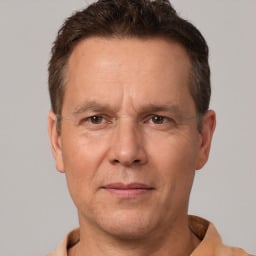Introduction to Physiological Principles For Health And Social Care
The area of health and social care involves for integration of the services that are likely to be made available by the healthcare professionals as well as care providers. The care services are given to bring an improvement in functioning of human body (Chiras, 2011). It further entails for understanding the concept related to mechanical, physical, and bioelectrical and biochemical functions. The given research study has focused on creating an understanding about structure and functioning of the human body followed by assessing the relation that exists between body functioning and relevant detailed anatomy and physiology amongst others. These areas has been discussed by making use of varied kinds of case studies so as to get a detailed understanding about chosen topic.
Lo1. Know the structure and functioning of human body
1.1 Main anatomical features of human body
The anatomical features entails for studying the overall morphology of the human body by having a detailed understanding about its structure. It can be divided into macroscopic and microscopic level. In this respect, gross anatomy entails for making a study about these structures that are likely to be visible by naked eye (Enger, Ross and Bailey, 2005). In this regard, there is a presence of many organs whose complex anatomical features are required to be discussed.
Liver is second largest organ in human beings whose shapes are that of a prism (Farley, McLafferty and Hendry, 2011). Its base is on right and apex to left. The organ is pinkish brown in color and has a presence of soft consistency, high vascularity followed by easy friability.
Heart is a blood pumping organ which is divided by partitions. It is present within chest cavity and surrounded by pericardium. The muscle of heart produces electrical impulses that make the heart contract (Ferrera, 2006).
Kidney is a pair of retroperitoneal structures which are located in transverse process of T12-L3 vertebrae. The left kidney has got a superior position than right.
1.2 Interactions of body systems to ensure body functions and growth
A number of interactions take place in the entire body systems. These are required towards making sure that there is proper functioning as well as growth. Homeostasis is all about controlling the internal conditions in terms of temperature, specific blood conditions as well as other variables found in living system. This helps in provision of a constant internal environment within the body (Johnson and Taylor, 2008).
Feedback regulation occurs in two basic forms being positive and negative. In case of negative feedback, that output of a system feeds back which make the stimulus turn off the response. While positive feedback causes an increase in stimulus (Juturu and et. al., 2006). For example during regulation of body temperature by centre of thermoregulation present in hypothalamus, there is a presence of two input sets. One is from sin receptors and other being hypothalamus (Kelble, 2005). The drop in temperature causes body to shiver which raises it. \on the other hand, of the body is warm then there is a generation of sweat to make it cool down on account of evaporation.
Cellular metabolism refers to the sum total of all the biochemical reactions that are taking place within cell. The metabolic activities taking on digestive system begins from mouth and ends in small intestine (Krauss and et. al., 2012). With the passage of food, there is a secretion of digestive juices thereby causing a break of large food molecules into small ones. These are then absorbed through intestinal walls and blood stream (Mader, 2004). Carbohydrate digestion entails for breaking up starch molecules by action of amylase enzymes thereby leading to creation of glucose that can be absorbed by intestine. In the same way, protein digestion requires proteases enzymes where proteins can be easily broken down into amino acids. This is followed b y digestion of fat by action of lipase enzyme.
To know more read this related sample on Health and social care
As is the case with digestion, respiration entails for carrying out a set of metabolic reactions where there is a conversion of biochemical energy from nutrients into adenosine triphosphate followed by release of waste products. The reactions are inclusive of catabolic where liege molecules are broken into small ones followed by releasing the energy.
rowth hormone is a protein substance that is secreted by somatotrophs cells present in anterior pituitary. It is involved in controlling several complex processes that are inclusive of growth and metabolism. There is always a requirement to have a definite concentration of this hormone within the body. The excess or even deficiency may lead to accompanying problems. For example, if the growth hormone has been present in excess then the person is likely to suffer from Acromegaly. This entails for large hands and feet followed by prominent facial features. In the same way, deficiency in growth hormone may lead to hypoglycemia in newborn infants. In case of adults it is a rare case but may led to diminished lean body mass, poor memory, social withdrawal and loss of stamina among others.
Lo2 Understand the relationship between body functioning and relevant detailed anatomy and physiology
2.1 Explain normal bodily responses to everyday activities
The case study that is based on a 25 year old individual clearly showcases that the person has been doing some form of physical activity in terms of distributing leaflets door to door. He is further planning to be a part of marathon run (Krauss and et. al., 2012). The everyday activity that is being performed by him in form of physical labor is likely to cause a body response which is described as follows;
Muscular-skeletal System- normal body responses to the work done by 25 year old individual is in terms of muscle contraction that are of concentric, eccentric and isometric in origin. \these contraction in long run increase the size of muscle fibers (Murphy, Friesner and Rosenman, 2009).The response of skeletal system is in terms of increase in overall concentration of Synovial fluid which causes an enhancement in joint range of movements. An increase in overall bone density is also seen followed by strengthening in muscles so as to make them more resistant to injury (Musaiger, Al-Mannai and Al-Roomi, 2013).
Cardio vascular System- The cardio vascular systems response of the 25 year old individual is in terms of causing an enhancement in the Heart rate that is proportionate to the level of physical activity that is being performed. An overall increase in Stroke volume as well as Cardiac output is further seen (Kelble, 2005). There is further a redirection of blood from the areas that demand less oxygen towers the ones that are in need of increased amount of oxygen. There is further a redirection of blood towards skin so as to prevent the overall loss of heat (Pylypchuk, 2010). In the long g run, this is most likely to cause an increase in heart mass and volume followed by revival of greater blood supply by body organs.
Respiratory System- As a result of the physical activity being performed by the person there is an increase in oxygen transport, respiratory as well as heart rate. If the individual carries out more physical activity then there is going to be a substantial increase in oxygen and carbon dioxide transport thereby increasing the respiratory rate (Rhoades and Bell, 2012).
Students also read: Sample on Aspects of Contract and Negligence in Business
2.2 Body responses explained by cellular and tissue structure and physiology
When the 25 year old individual undertakes some or the other form of physical activity then the body shows an increase in the need towards oxygen and substrate. Exercise has been found to bring a substantial change in Muscle cells which are in form of burning fat in the best possible manner (Riederer, 2011). This further led to cause an increase in overall muscular strength. A change is further observed in overall distribution of blood flow which is a must to meet put the overall demand placed by working tissues and organs towards oxygen. The much needed energy is provided by Adenosine Tri Phosphate (Shaw, 2005).
2.3 Body coordination in terms of internal activities
Person of the age of 25 years has been facing a lot of internal activities within the bodily framework. These activity set are basically coordinated by nervous and endocrine system. Endocrine system releases hormones whose production is low at initial level f any physical activity (Starr, 2013). The system further regulates the functioning of body followed by mood symptoms. Other than this, there is also a presence of nervous system that has been found to act as a Major centre for control and coordination. This system is further responsible for creating as well as maintaining body balance during times of exercise (Enger, Ross and Bailey, 2005). It sends immediate signals to help in assessing the body requirements. In the same way, the cells that are a part of nervous system target the endocrine network for triggering a release of hormone.
Lo3 Understand how routine data collected in health and social care informs the planning of care for individuals
3.1 Recording and use of routine measures in health and social care
The person as per given case is in the age of 65 years, obese and is suffering from fever and flu like symptoms. This entails for making usage of Recording and use of routine measures to assess his conditional (Farley, McLafferty and Hendry, 2011). Sensing his present condition, there has been a use of routine tests that are as follows;
Measuring Temperature- As the person is suffering from fever hence the requirement is to measure overall body temperature (Johnson and Taylor, 2008). It can be measures with the help of thermometer. If a person has fever then reading will be more than 98.6 degrees F which is assumed as a normal temperature of human body.
Blood test – In order to check the type of fever and distinguish it from viral nature there is a requirement to carry out blood test.
Blood Pressure- As the person is obese; hence the requirement is to check for Blood Pressure with the help of Sphygmomanometer. It is defined as the pressure that is exerted by blood on the walls of vessels (Johnson and Taylor, 2008). It denotes if blood circulation is within the normal range in body or not
Pulse Rate- This is used for measuring the heart beat which should be from the range of 60 to 100 beats per minute in case of a normal adult. The pulse rate is used to denote normal pumping of blood.
Also Read: Leading Organizational Equality & Diversity
3.2 Information provided by routine measures about body functioning
The routine measures that have been recommended for the 65 years old individual is likely to provide information about body functioning. There is a recording of body temperature by means of thermometer. This will help in knowing the degree of fever being suffered by the 65 year old person. Blood test will further aid in finding out whether the fever is of viral or some other origin (Farley, McLafferty and Hendry, 2011). This will be detected by normal of WBC that is present in the body. In the same way, measuring the blood pressure will detect the chances for developing cardio vascular disease. It is well known that if a person has got a blood pressure is above 115/75 mmHg then there is a chance of developing heart disease (Krauss and et. al., 2012). This applies to individual as per case study because the person is obese and likely to have a chance of developing disease which is cardiovascular in origin (Enger, Ross and Bailey, 2005). Pulse rate that has been recorded for given person as per case is likely to be on a higher level on account of the fever. Hence, the routine tests that have been performed on the 65b year old obese individual are likely to provide much needed information about functioning of body.
3.3 Information about body functioning inform care planning
Care planning entails for making use of all the preventive measures in response to information that has been provided by routine measures. The results are likely to help in care planning as this would help in intake of necessary actions on person who is obese and is suffering from flu and fever like symptoms. Necessary treatment can be provided to patient to n basis of the routine measures (Johnson and Taylor, 2008). The measures will help in detecting the level of illness that is being faced by patients so as to help in provision of the right type of treatment. In present scenario, the Basic treatment may entail for following a good approach towards diet and nutrition followed by adhering to physical activity as well as adopting a long term weight management approach.
You may also like to read: Sustainable Tourism: Qatar
Lo4 Be able to relate routine variations in body structure and functioning to carfe received by individuals
4.1 Age may affect body structure and functioning
The old lady is in age of 85 years which has affected her overall body structure as well as functioning. The old age has put an impact on Integumentary systems which has led to less healing of wounds on the leg. She has further been backed up varied kinds of illnesses in terms of type 2 diabetes which indicates a presence of high glucose in her body (Type 2 Diabetes, 2014). Other than this, the old age has brought an impact on overall structure and functioning of body in terms of arthritis in the knees thereby diminishing an ability of person to perform effectively. Arthritis is a condition that has been there in old lady on account of age which has resulted in creation of constant or localized pain in joint region. This is followed by overall stiffening of tissue thereby making it difficult for stress toleration (Rheumatoid Arthritis, 2014). Ageing process has further made the lady suffer from hypertension thereby impairing the heart as well as blood vessel function. This has made the old lady gain a risk towards developing cardiovascular diseases in the form of hypertension (High Blood Pressure, 2014).
4.2 Impact of common disorders on body structure and functioning
As per the case study, the lady has been suffering from varied kinds of disorders in terms of Hypertension, type 2 diabetes as well as arthritis. These disorders have put a huge impact on overall body structure as well as functioning. For example, Hypertension has increased pain in the back of head followed by altering in vision as well as fainting episodes. In the long run, the impacts are likely to be seen in terms of causing damage to artery, heart as well as brain (Enger, Ross and Bailey, 2005). The kidneys may further get damaged in form of failure, scarring as well as artery aneurysm. In the same way, there is also a presence of varied impacts of type 2 diabetes. Here, the fat, liver as well as muscle cells may not respond to insulin in a normal manner thereby damaging blood vessels and causing issues related to eye (High Blood Pressure, 2014). Diabetes has a tendency to damage nerves which has made it difficult for the lady to feel injury in feet until there is a development of infection or sore. This has further resulted in causing frequent urination and tiredness as well as thirst (Living with diabetes, 2014). The lady has also been suffering from arthritis which has made her feel an increased burning or sharp pain in the joint region. These have been in terms of stiffness and making the muscles around joint.
4.3 Effects of common disorders and infection to the care routinely given to the individuals affected by them
The ole age and disorders being suffered by lady has put an overall impact on the routine care that is being provided to her. This is because the varied kind of diseases may not led to get the desired outcome from the treatment regimes that may be administrated to her. For example, as a treatment to diabetes mellitus type 2, she is required to carry out physical activities on a regular basis (Farley, McLafferty and Hendry, 2011). This may not be possible as she is suffering from arthritis and is quite old in age. Research studies have made it clear that arthritis increases with age and there is an absence of any cure for the same. Even if cure is apple in form of surgery then wound healing may be difficult as she is suffering from diabetes. However, the old lady can be given pain killers to relieve the pain so that she can carry out some form of physical activity (Johnson and Taylor, 2008). The lady may further be required to bring change in lifestyle and diet plan. To help in proper treatment there may be a requirement to utilize a set of screening methods so as to investigate the given scenario. These may help in understanding bathe overall severity of condition being suffered by old lady followed by assessment of the associated complications (Krauss and et. al., 2012).
CONCLUSION
From the above study, it can be concluded that it is essential to take care about the aspects that are related to human anatomy and physiology. The knowledge s required so as to provide care measures that aero f routine origin. These may act as a great help you inform the care planning measures that are required to be carried out for individual (Enger, Ross and Bailey, 2005). They may further assist in formulating a nursing plan so that a proper diagnosis of the condition can be carried out followed by necessary care to be undertaken for same.
Suggested Samples:
- Law for licensed premises
- Significance of Working positively in Partnership with others in Health and Social Care
REFERENCES
- Hiras, D. D., 2011. Human Body Systems. Jones and Bartlett Publishers.
- Enger, D. E., Ross, C., F. and Bailey, B. D., 2005. Concepts In Biology. Tata McGraw-Hill Education.
- Farley, A., McLafferty, E. and Hendry, C., 2011. The Physiological Effects of Ageing. John Wiley and Sons.
- Ferrera, A. L., 2006. Focus on Body Mass Index and Health Research. Nova Publishers.
- Johnson, J. M. and Taylor, W. A., 2008. Physiology of Exercise and Healthy Aging. Human Kinetics.
- Kelble, A., 2005. Spices and type 2 diabetes. Nutrition & Food Science.
- Krauss, M., and et. al., 2012. Integrating Cellular Metabolism into a Multiscale Whole-Body Model.
- Mader, S., 2004. Human Biology. McGraw Hill Publishing.
- Murphy, S., Friesner, D. and Rosenman, R., 2009. Determining factors in the treatment choice of patients with hypertension with complications and secondary hypertension. International Journal of Health Care Quality Assurance.















